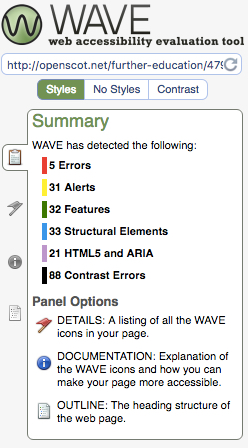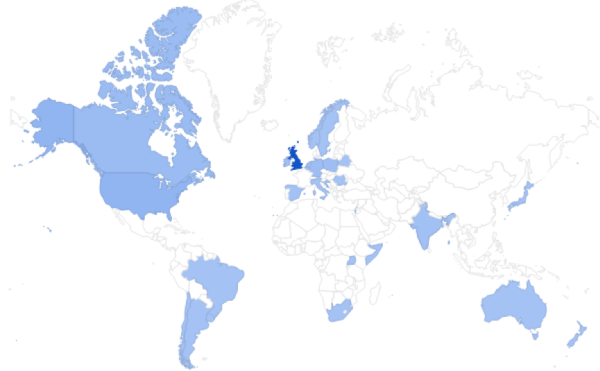When Clint Lalonde came up with the crazy and wonderful idea of recording a serialised audio version of Martin Weller’s 25 years of Ed Tech book and asked if I was interested in getting involved, I knew right away which chapter I wanted to read. And I also knew it was one of the chapters no one else was likely to volunteer for – E-Learning Standards. That’s not to disrespect to Martin’s writing, it’s more a reflection of the fact that the standards that he highlights in this chapter were never particularly successful. The reason I was so keen to read this chapter though is that I spent 15 years of my life working on various learning technology standards projects, mostly focused on resource description, metadata, and controlled vocabularies, including some that Martin critiques in the chapter. On pretty much all of these projects I worked with Phil Barker, so it seemed only natural to invite Phil to join me for the recording, which he kindly agreed to do, despite claiming not to enjoy audio recording :}
Another reason I thought it would be fun to record this chapter is that people used to find the way I pronounce “metadata” absolutely hilarious. To this day, I have no idea why, however I used to get frequent requests from American colleagues at ed tech standards meetings to “say the word metadata.” Admittedly standards meetings could be pretty dull, so we had to make our own entertainment.
We used Zencastr to record the chapter, which worked pretty well, however for reasons of acoustics I ended up having to record my audio in my bedroom rather than the open plan office downstairs were I usually work. Sitting on the bedroom floor reciting the elements of the Dublin Core was definitely one of the more surreal moments of lockdown.
Recording this chapter also put Phil and I in the interesting position of reading Martin dissing several standards that we had been responsible for developing, particularly the UKLOM Core. Although we both felt that some of Martin’s criticism of Dublin Core really applied to the IEEE LOM, the cause of this confusion highlighted exactly what was wrong with many e-learning standards; too many of them were overly complex and educators should never have been expected to get to grips with them in the first place. Phil and I had an opportunity to discuss these and other issues in an entertaining Between the Chapters discussion with Laura Pasquini. Phil has already written a blog post about this discussion here, Reading one of 25 years of EdTech, which I can highly recommend reading, particularly if you want to revisit the dawn of EduProg.
From my perspective, I think one of the most important points Martin raises in this chapter, and which we discussed in the podcast, is that although many e-learning standards didn’t really work, we learned from our mistakes, and went on to lay the foundations for the emerging OER movement. The UKOER programme is a perfect case in point. When the programme was launched in 2009, Phil and I had already contributed to the technical strategies for a number of JISC development programmes and we knew from painful experience that expecting educators to understand baroque metadata standards and provide meaningful descriptions for fields such as semantic density (memorably described as “the poster child for useless metadata elements”) just didn’t work. Application profiles such as the UK LOM Core were an attempt to simplify these complex standards, and make them more human friendly and interoperable, but even these profiles were woefully complex. So when the UKOER Programme came along, we decided on a completely different approach. (You can read the original technical requirements on my old Cetis blog here: OER Programme Technical Requirements.) Rather than mandating the use of a specific metadata standard and application profile, we simply told people what information to record (title, author, date, url, basic technical info), we didn’t tell them how to record the information, we left that up to them. The only metadata item that we actually mandated was the programme hashtag, #UKOER. There was a lot of discussion about the wisdom of this approach, web 2.0 was still in its infancy, and people were only just beginning to get to grips with new-fangled approaches to resource description such as community generated metadata and folksonomies. Some people also complained that using the hashtag for resources as well as information about the projects would muddy the water and make it hard to find content. Another radical approach we recommended for the UKOER programme was that projects could share their resources using “any system or application as long as it is capable of delivering content freely on the open web”, on the proviso that they also uploaded their OERs to Jisc’s national learning resource repository Jorum for safe keeping. I’m not going to go into the reasons why central learning resource repositories are a bad idea, that’s a whole other blog post. Suffice to say that Jorum has long since been consigned to the annals of ed tech history.
The technical strategy we developed for the UKOER programme, was really our first attempt at using the open web as technical infrastructure and by and large, it actually worked. Almost ten years after the end of the programme, if you search for UKOER, you can still find some of the project outputs on the open web and on sites like Flickr and YouTube. And what is even more remarkable is that, despite there being some heated discussion at the end of the programme about whether the UKOER hashtag should be retired, people are still using it on twitter to this day. All of which backs up Martin’s closing point that:
“not only did some of the ideas from learning objects and standards later evolve into the work on open educational resources (OER) but many of the same personnel were involved; for example, Stephen Downes, David Wiley, Lorna Campbell, Brian Lamb, and Sheila MacNeill all contributed to this early field and then became significant voices in open education. This demonstrates that while some approaches do not achieve the success envisaged for them, the ideas and people involved develop the key ideas into more successful versions.”
Huge thanks to Martin for chronicling the history of ed tech with his brilliant book, to Clint for making this amazing project happen, Laura for being such an engaging podcast host, and last but not least, Phil for putting up with me for 15 years of metadata projects!
 Gillies, D., 2016. Visiting good company: Arendt and the development of the reflective practitioner. Journal of educational administration and history, 48(2), pp.148-159.
Gillies, D., 2016. Visiting good company: Arendt and the development of the reflective practitioner. Journal of educational administration and history, 48(2), pp.148-159.
 The blog I chose was the
The blog I chose was the 

 I was surprised and delighted to be included in a blog post from the
I was surprised and delighted to be included in a blog post from the 

